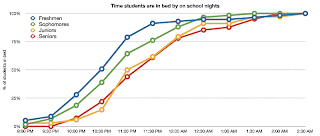Obesity In Our Society
By: Christine Le
“More
than a billion adults worldwide are now overweight, and at least 300 million of
them are clinically obese. Childhood obesity is already epidemic in some areas
and on the rise in others. Worldwide, an estimated 17.6 million children under
five are said to be overweight”, says Morgan Spurlock. Obesity has become a
major problem in our society. Many of the causes are from the genetic factors,
lack of physical activity, and unhealthy eating patterns. Obesity is not good
for a person and causes many problems like health problems, physical and social problems, and
mental health problems.
Many sicknesses/ illnesses can be an effect of obesity. Obesity is a chronic condition defined by an excess amount body of fat. Being a little overweight would not cause any problems but when a person exceeds the normal weight, the amount of body fat can have a negative effect. In the U.S, roughly 300,000 deaths per year are because of obesity and more than 80% of these deaths have a BMI over 30. Obesity causes type 2 diabetes, high blood pressures, heart attacks, etc. Having these illnesses increases the chance of death. Type 2 diabetes’ risk increases with the more a person is obese. Type 2 diabetes is associated with the central obesity and a person with central obesity has fat on their waist. High blood pressure is very common among the adults. A Norwegian study showed that women usually had higher blood pressure do to fat than men. A study found that three to four times the women who had a BMI greater than 29 had heart attacks or coronary artery disease. On June 1998, the American Heart Association announced that obesity was a “major risk factor” for CHD (coronary heart disease).
Physical and social problems can also be something that obesity causes.
Many people have a problem with their body image and how they look because of
being obese. Feeling conscious and hating their body image, many people start
to get anorexic, bulimic, and have depression. There are many social problems
that are effects of obesity. Young kids that are obese and fat are most of the
time bullied in school. Being overweight and obese causes many kids to be
vulnerable to bullies and having good social skills get them bullied more
often. Julie Lumeng, M.D., a professor of pediatrics at the
University of Michigan, in Ann Arbor says, “What we found is that it didn't matter. No matter how
good your social skills, if you were overweight or obese you were more likely
to be bullied.” To cope with all the bullying, most kids start to lower their
self-esteem, become depressed, and even try commit suicide because of all the humiliation.
Obesity also causes many mental health problems. The World Health Organization (WHO) believes that by 2020, obesity will be the single biggest killer on the planet. Obesity triggers the start of depression, eating disorders, distorted body image, self-esteem, etc. Evidence from Swedish Obese Subjects (SOS) study indicates that depression is three to four times higher in obese individuals than in non-obese individuals. “Depression on a level indicating psychiatric morbidity was more often seen in the obese,” says Professor Marianne Sullivan from Sahlgrenska University Hospital, Sweden.
Being obese is a huge and major problem in our society today.
So many people are becoming overweight and obese from the lack of physical
activity/exercise, an unhealthy diet/pattern, and the genetic factors. To help
prevent being obese, a person can start eating a healthy diet, and exercising.
Having a healthy diet is eating the right amount of everything on the food pyramid
like fruits, vegetables, grains, dairy products, etc. Exercising will also help
prevent it because exercising gets rid of all the extra fat that a person does not
need and burning all the calories. Making these changes can help a person lose
5%-10% of their initial weight and prevent the increase of health problems, physical and social problems,
and mental health problems.
Sources:
- The Negative Effects of Obesity. N.p. motiveweight.blogspot.com.Web. 5 Nov. 2011.
- Obese Level State By State for 2012. N.p. phitamerica.org. Web.
- Blanchard, Vanessa. Fat Letters from Schools are Shaming Kids.N.p. guardianlv.com. Web. 8 Oct. 2013.
- Mental Graph. N.p. ncpad.org.Web.





















